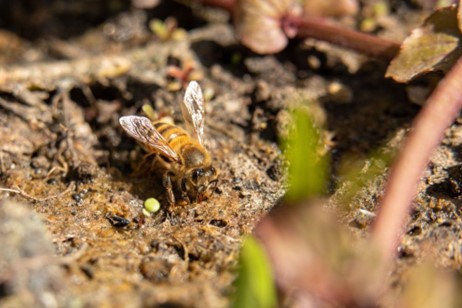The EU is an example of investment in soil research, overall soil health and sustainable soil management, a JRC review of 40 years of EU-funded soil research shows.
The EU has made enormous efforts to support soil research in the past and in the near future. It has disbursed around one billion EUR for more than a thousand soil-related research projects over the last 40 years, according to a review carried out by scientists of the EU Soil Observatory (EUSO) team at JRC.
Nearly as much funding is earmarked for the next seven years thanks to the Soil Mission, an initiative within the current EU research funding programme Horizon Europe.
The analysis shows that the EU has invested significantly in developing integrated knowledge about the relationships between soil functions and ecosystem services and how human-induced pressures affect soil health.
It adds useful information on EU funding and policies related to protecting, sustainably managing and restoring soil health. The results provide timely and relevant evidence to advance the state of soil science in the EU.
The state of Europe’s soil
Over the years, the total budget allocated to the successive research funding programmes, the EU Framework Programmes (FPs) for Research and Innovation (R&I), has continually increased, which is also reflected in an increase in funding for research in soil science.
Over 60% of European soils are unhealthy and scientific evidence shows that this is getting even worse. Aiming to address key soil threats in the EU, on 5 July 2023, the EU proposed a new Soil Monitoring Law to protect and restore soils and ensure that they are used sustainably. Given the increased political attention on soils in the EU, the analysis of soil research is particularly relevant.
How has research on soil changed over the years?
The analysis illustrates the interplay of permanent and changing soil themes addressed in EU funding over time. ‘Contaminated soil’ and ‘Soil and water’ research themes are highly interlinked. They have been the most important themes addressed in soil research during the first Research Programmes.
Although water and soil pollutants represent two major categories of environmental pollution, the issue of historical contamination remains an important gap in European policymaking on soils. ‘Soil conservation’ has been a central theme in EU-funded research and has remained stable throughout the FPs (accounting on average for 25% of the projects).
Soil conservation in Europe had started to gain political attention during the last decade of the 20th Century and it became rapidly obvious that soil conservation was a complex issue, particularly in Europe, where long historical and industrial development have had a deep impact on European soil resources.
Findings from soil conservation research projects have proposed new management practices, some of those have been introduced in the Good Agricultural and Environmental Conditions (GAECs) of the common agricultural policy(CAP). While ‘Soil conservation’ research has remained stable, ‘Climate change’ has exponentially increased over the time becoming the most important research theme accounting for more than 40% of the soil research in H2020, the FP that ran from 2014 to 2020.
The future of soil research
Given the key role of healthy soils in the carbon cycle and the expanding policy attention to soil carbon research, an increasing amount of funding can be expected for research projects that will help to improve soil health and foster more sustainable soil management practices.
In the review, authors also discuss how EU policies can capitalise from soil research funding. R&I outcomes are needed to ensure optimal policy development, or eventually adaption, based on robust evidence.. The EC is a unique place where results from soil research can be applied given the science-policy forum nature of it.
Authors show that R&I is a key enabler for change, however only its interaction with other instruments and practices will result in major breakthroughs and deliver added value. The European Soil Observatory (EUSO) has a central role integrating research outcomes of EU-funded soil-related projects.
Launched in December 2020 to be the long-term central scientific and technical point of reference in the European Commission concerning all soil matter, EUSO provides the necessary indicators for the regular assessment of soil health in the EU. In addition, the European Soil Data Centre (ESDAC) – an integral part of the EUSO – is since 2006 the focal point for soil data, providing Open Access harmonised soil-related information.
The EUSO provides and benefits from EU R&I activities on soil and in particular from projects funded as part of the Horizon Europe Mission ‘A Soil Deal for Europe’ ( Soil Mission). The Soil Mission, which aims to establish a network of 100 living labs and lighthouses to lead the transition towards healthy soils by 2030, provides a further incentive for soil research.
With an unprecedented budget of one billion EUR for seven years, Soil Mission will fund R&I in order to protect and restore soils in Europe and beyond. The EUSO engages with the Soil Mission, steering its research agenda, ensuring alignment between EUSO and the development of research on soils in the EU. Finally, the EUSO will become the repository of the Soil Mission research projects’ outputs.
The Soil Mission and the EUSO together with the EU Soil Strategy 2030 and the new proposal for a Soil Monitoring Law set up the political framework, concrete measures, and a monitoring system needed for the protection, restoration and sustainable use of soils.
Source: European Commission | EU Science Hub (https://shorturl.at/MT145)
